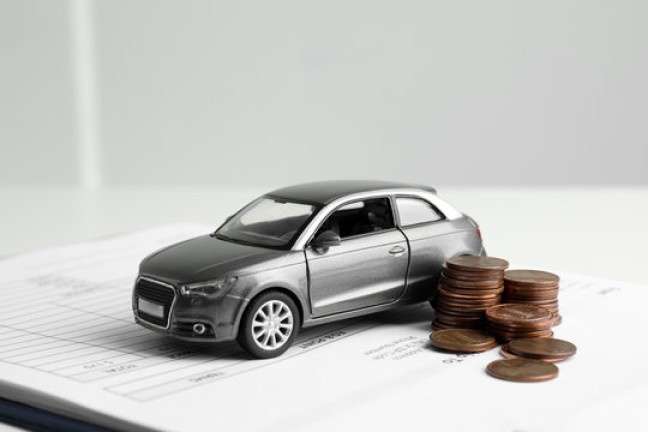Purchasing a car is often one of the most significant financial decisions in our lives. Whether you’re looking for a new vehicle or a used one, the cost can be daunting. Car finance is an attractive option for many people, as it allows you to spread the cost over time. However, before diving into the world of car loans or finance agreements, it’s essential to ask yourself: Am I eligible for car finance?
Understanding your eligibility for car finance is crucial, as it will help you avoid any disappointment or confusion down the line. In this article, I’ll guide you through the factors that lenders consider when assessing your eligibility, explain the different types of car finance available, and provide some real-life examples and calculations to help you make an informed decision.
Table of Contents
1. What Does ‘Eligibility for Car Finance’ Mean?
Eligibility for car finance refers to whether a lender is willing to offer you a loan to purchase a vehicle. Lenders, such as banks, credit unions, or specialized car finance companies, evaluate your financial situation, credit history, and ability to repay the loan. If you meet their requirements, you’re eligible for car finance, and you’ll be offered a loan at certain terms. If you don’t meet their criteria, you might not be approved, or you may receive a loan with higher interest rates.
2. The Key Factors That Affect Car Finance Eligibility
When I first applied for car finance, I had to consider several factors that could affect my eligibility. These are the primary things lenders look at:
a. Credit Score
My credit score is one of the most critical factors that lenders use to assess my eligibility. A credit score is a number that reflects my creditworthiness, based on my history of borrowing and repaying money. A higher credit score typically means I’m less risky for lenders, making me more likely to get approved for finance at favorable terms.
Here’s how my credit score can affect my eligibility:
| Credit Score Range | Impact on Eligibility | Interest Rates |
|---|---|---|
| 300 – 579 | High risk, likely to be declined | Very high |
| 580 – 669 | Fair, may be approved with higher rates | High |
| 670 – 739 | Good, favorable loan terms | Competitive |
| 740 and above | Excellent, great chance of approval | Low |
A score in the “Good” or “Excellent” range will likely result in better loan terms, including lower interest rates. On the other hand, if my score falls in the “High risk” range, I may either be denied or have to pay significantly more.
b. Employment Status and Income
My employment status and income are other crucial factors lenders use to evaluate my ability to repay a loan. Lenders want to know that I have a stable income to cover monthly repayments. In my case, if I have a steady job with a reliable income, lenders are more likely to approve my car finance application.
Let’s look at a breakdown:
| Employment Status | Impact on Eligibility |
|---|---|
| Employed full-time | Positive, stable income source |
| Self-employed | Can be positive with proof of income |
| Unemployed | Negative, unless there’s a co-signer or other assets |
| Retired | Can be positive with sufficient pension income |
If I’m self-employed, I might need to provide extra documentation, such as tax returns, to prove my income. If I’m unemployed, getting approved will be much harder unless I have substantial savings or another reliable income source.
c. Deposit/Down Payment
When I applied for car finance, I was also asked about the deposit I could provide. A larger deposit can work in my favor, as it reduces the amount I need to borrow and shows the lender that I’m financially responsible. Typically, lenders may ask for a deposit of 10% to 20% of the car’s value, but the more I can put down, the better my chances of approval.
| Car Price Range | Suggested Deposit |
|---|---|
| £5,000 – £10,000 | £500 – £2,000 |
| £10,000 – £20,000 | £1,000 – £4,000 |
| £20,000 and above | £2,000 and above |
d. Debt-to-Income Ratio
My debt-to-income ratio is an important metric that lenders use to assess whether I can afford new debt. It’s calculated by dividing my monthly debt payments by my gross monthly income. If this ratio is too high, it may signal to lenders that I’m over-leveraged and may have difficulty making repayments.
For example, if my monthly income is £2,500, and I have £500 in monthly debt payments, my debt-to-income ratio would be:\frac{500}{2500} = 0.20 \text{ or 20%}
Lenders typically prefer a debt-to-income ratio under 36%, but some may approve loans with a higher ratio, especially if I have a strong credit score.
e. Age and Residency
In many cases, I need to be at least 18 years old and a resident of the country where I’m applying for car finance. Some lenders may have additional requirements, such as proof of address or a minimum length of time living in the area.
f. Vehicle Age and Condition
The age and condition of the car I want to finance can also impact my eligibility. Lenders may be less inclined to offer finance for older cars or vehicles with high mileage. In most cases, cars older than 10 years or with more than 100,000 miles may be harder to finance, though this varies between lenders.
| Car Age | Impact on Eligibility |
|---|---|
| Less than 5 years | Positive |
| 5-10 years | Neutral, depends on condition |
| 10+ years | Negative, harder to finance |
3. Types of Car Finance
Now that I understand the factors influencing my eligibility, I’ll look at the different types of car finance available to me. There are several options to consider, each with its pros and cons. I’ll cover some of the most common types:
a. Hire Purchase (HP)
With a Hire Purchase agreement, I make monthly payments over an agreed period. At the end of the term, I own the car outright. The deposit is typically required upfront, and the loan is secured against the car.
Example:
- Car Price: £10,000
- Deposit: £2,000
- Loan Amount: £8,000
- Term: 5 years
- Interest Rate: 7%
- Monthly Repayment: £149.75
Over the 5-year term, I’ll repay £8,000 plus interest, amounting to a total repayment of £8,987.80.
b. Personal Contract Purchase (PCP)
PCP is similar to HP, but with one key difference: I can choose to return the car at the end of the term or make a final “balloon” payment to own the car. This gives me more flexibility, as my monthly repayments are typically lower compared to HP.
Example:
- Car Price: £10,000
- Deposit: £2,000
- Loan Amount: £8,000
- Term: 3 years
- Interest Rate: 5%
- Monthly Repayment: £156.12
- Final Balloon Payment: £4,000
After 3 years, I have the option to pay the balloon payment or hand the car back.
c. Personal Loan
If I prefer not to have the car secured against the loan, a personal loan could be a good option. This type of loan allows me to borrow a set amount of money and repay it over time without any restrictions on the vehicle.
Example:
- Loan Amount: £10,000
- Term: 5 years
- Interest Rate: 8%
- Monthly Repayment: £202.57
The key advantage of a personal loan is that once I repay the loan, the car is mine, free of any further obligations.
4. How to Improve My Chances of Car Finance Approval
If I’m not sure about my eligibility or want to increase my chances of approval, there are several things I can do:
- Check my credit report: Regularly checking my credit report can help me identify any errors or areas for improvement.
- Save for a larger deposit: A bigger deposit reduces the loan amount and shows the lender I’m financially responsible.
- Consider a co-signer: If my credit history isn’t great, having a co-signer with a stronger credit profile can increase my chances of approval.
- Avoid making other large purchases: If possible, I should avoid taking on additional debt before applying for car finance.
5. Conclusion
When I asked myself am I eligible for car finance?, I learned that there are many factors at play. From my credit score to my employment status, deposit amount, and the vehicle’s condition, each element can impact my eligibility and the terms of my loan. By understanding these factors, I can make informed decisions about how to improve my chances of approval and secure the best deal.
Ultimately, eligibility for car finance comes down to my financial situation and the lender’s criteria. It’s not just about having the right credit score – it’s about showing that I can responsibly manage the loan and make the necessary repayments. With this knowledge in hand, I can confidently approach car finance and find an option that works for me.





